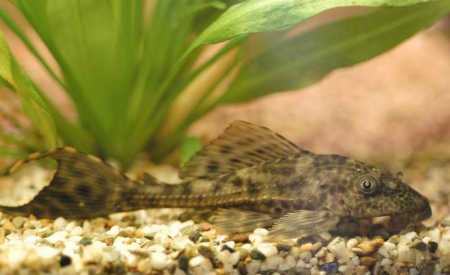5 Best Algae Eaters for Freshwater Aquariums

Fish tanks benefit from having algae eaters that can help control and reduce unattractive and potentially harmful algal growth inside the tank. Although balancing nutrients and promoting good water quality are also important in combating algae in aquariums, algae eaters are considered the most powerful tool in the war against algal growth.
Algae eaters come in all shapes and sizes, with some species more effective than others. These include shrimps, snails, and fish that feed on algae. Some algae eaters like plecostomus can grow quite large and so you'd benefit from having as large a tank as possible such as a 125 gallon aquarium.
Before getting algae eaters for your tank, you need to consider how their presence will impact the other inhabitants of the aquarium. Compatibility with the existing population is very important to keep aggression and competition down.
Since algae eaters are also considered pets, they will also need other sources of food for their sustenance and well-being.
Here are the 5 best algae eaters for freshwater aquariums:
Amano Shrimp (Caridina japonica)
- Voracious eaters, consuming not only algae (except blue-green and green spot algae) but also decaying organic material and leftover food.
- Compatible with smaller, docile fish that won't prey on them.
- Larger loaches and gouramis will eat Amano shrimps.
- Extremely sensitive to copper, a common ingredient in fish medications and plant fertilizers.
- Not aggressive; haven't been known to eat fry.
- Their small size makes them ideal for smaller tanks.
Plecostomus (Plecos)
- Readily available in pet stores.
- Can grow from 10-15 centimeters in length and can be good algae eaters for larger planted tanks.
- Have insatiable appetites--Apart from bottom-lying algae, they will also consume blanched vegetables, and even aquatic plants with soft leaves like the Amazon Swords.
- Being nocturnal, they feed at night and retreat to safety during daytime. Thus you need to provide rock shelters on the tank bottom.
- They can be placed in tanks containing more aggressive fish species since they have a pair of barbs on their cheeks that they can use for defense.
Otto Catfish or Oto Cat (Otocinclus affinis)
- Although relatively small, these catfish species are amazing algae eaters.
- They are not aggressive and can be suitable in almost any size of aquarium.
- Oto cats eat lots of algae and won't feed on aquatic plants. They love to feed on brown algae that are common in tanks that have been newly started.
- Their small size makes them easy prey for angel fish and other cichlids.
- Apart from algae, they will also benefit from an external source of food.
Siamese Algae Eaters (SAE) (Crossocheilus siamensis)
- SAEs are strong swimmers and jumpers, thus tank lid should be always fastened.
- They are voracious eaters and will feed on algae from aquatic plants, decorations, and tank walls. They will also consume leftover food, and can compete with your fish for flake food and live food.
- Also feed on flatworms, considered by most hobbyists as tank nuisance.
- They may exhibit territorial behavior with their own species thus you should limit the number of SAEs, from 1-5 in a 100 liter tank.
- SAEs are quite sensitive to low pH levels and will need plenty of oxygen in 25C water temperature.
- They will thrive well in tanks with abundant living aquatic plants and plenty of room to explore and forage for food.
Malaysian Trumpet Snail (Melanoides tuberculata)
- Small nails which are less than 2 centimeters.
- Feed on most types of algae and organic debris.
- Feed during the night and prefer to spend the day under the gravel or substrate.
- They spend a considerable time digging through the tank substrate, thus they are important in promoting aeration of the substrate.
- Loaches and cichlids will prey on snails.
- The snails can be used as indicators of water quality - poor water quality causes them to go up to the water's surface over the aquarium glass.
